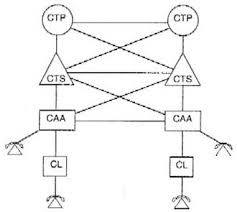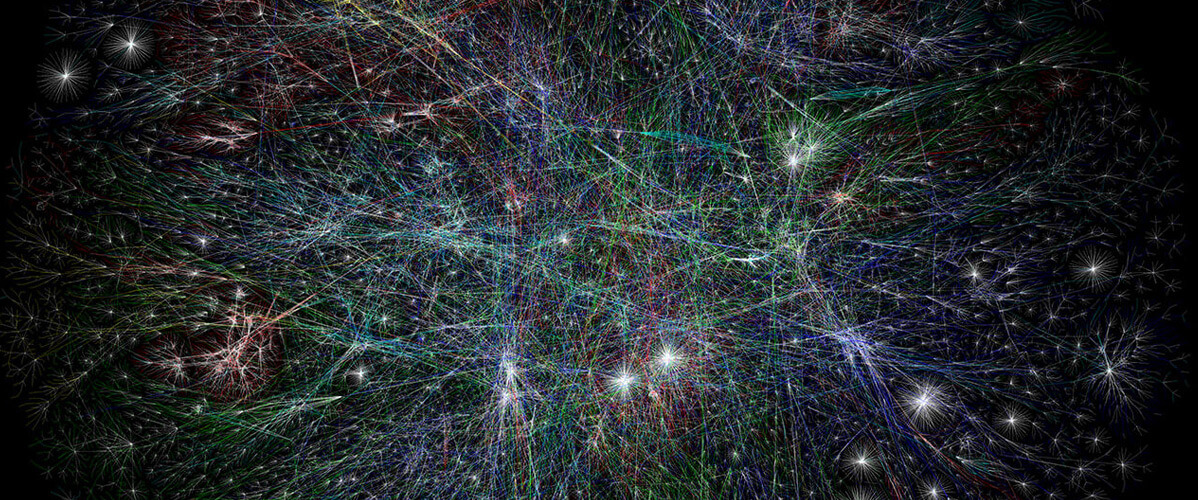What is a “system of systems”?
A system of systems is the aggregation of multiple autonomous and operationally independent subsystems, independently designed, physically distributed and in dynamical interaction, between each other and with their environment.
Unlike complex systems, which were first studied from natural sciences (physics, biology) and social sciences, systems of systems are squarely within the purview of engineering, addressing the relevant level of organization corresponding to the “organic” bottom-up composition of subsystems that usually remain individually designed and mastered under traditional top-down engineering approaches.
Yet, like a natural complex system, a system of systems is characterized by the fact that it can manifest, at the relevant upper level of its organization, behaviors or evolutions that are emergent phenomena, i.e. not reducible to the individual properties of its constituent subsystems, nor analytically predictable. Like a complex system, a system of systems could also be simulated, for the sake of analyzing these emergent phenomena, by a complexity-equivalent-model that mimics its organization at the relevant highest level of integration, while reducing the subsystems to simplified models capturing only those behaviors that are relevant to their interactions within the encompassing system.
Systems of systems engineering goes against the grain of traditional top-down functional specification approaches. It requires accepting that, for at least at one level of integration, a system gets created by the bottom-up dynamical and spontaneous assembly of more or less autonomous individual subsystems. In a first round of approach, the analysis of the system thus resulting from this federation of subsystems can draw upon the study of “natural” complex systems, adding a new branch to this field of transdisciplinary science that has been accruing since the 1980s.
Examples of systems of systems in telecommunications
Global Internet
“Old school” telecom networks were centralized systems, entirely managed by a single operator, where even the terminal equipment installed at customer premises used to remain the property of this operator! Resulting from a 100% top-down engineering process, they were not in any regard complex systems or systems of systems, and their interconnection (in pre-internet circuit-switched networks) was too constrained for the resulting distributed system to be seen as such. The internet as a federation of networks, seen at the level of the interconnection of AS (Autonomous Systems) as a result of a bottom-up incremental integration process, can be seen, by contrast, a system of systems in the proper sense.


Cellular networks
A fixed-infrastructure cellular network is very close to an old-style landline telecom network in being centralized and managed by a single operator. Even if mobile devices are owned and managed independently of the operator, contrary to terrestrial POTS phones of yore, their interaction with the core network to which they are connected is too constrained an limited for these networks to be considered systems of systems. It might, however, be considered to evolve into a system of systems proper when it includes independently managed femtocells, or device to device operation.
Internet of Things
The Internet of Things is, at several different levels, an almost ideal example of a system of systems seen as a loosely coupled federation, not only of devices but also of networks and platforms that are independently managed by third parties.
“FOG computing” infrastructures
Seen as the evolution of cloud infrastructures hosted in mammoth smokestack-industry-like data centers and managed in a centralized way by exclusive operators, FOG infrastructures, which can go all the way down to mobile end-devices or pieces of hardware located in private homes (possibly used as radiators, see for example Qarnot devices) are also an ideal example of a system of systems.
Cyber-Physical Systems
Cyber-physical systems, defined as the interconnection, through the devices and networks of the Internet of Things, of industrial systems that used to be managed and controlled by traditional industrial automation, are also an ideal example of system systems inasmuch as they integrate sub-systems that have not been pre-designed to work together and become more loosely coupled.
Relevance of the “system of systems” approach in telecoms engineering
Evolution of conventional systems that become systems of systems without having been designed as such
This is the most common situation today, and it is very important because it is potentially relevant to ALL open telecom systems! For these systems, it is necessary to elicit and analyze potential emerging phenomena, then to integrate the complex system approach in a defensive way : the first priority should be to forestall unforeseen harmful emergent phenomena. After this, it can be envisioned to evolve gradually towards the approach proposed in the next section.
Design of systems for integration into overarching systems of systems
In this approach, a telecom system is specified in a traditional way only at the level of its constituent subsystems, setting up a framework for the inter-connection, composition and eventual growth of the composed overall system as the result of a bottom-up process that is neither fully planned nor directed. The operation of such a system is also not controlled centrally, but results at least partially from the implementation of “peer-to-peer” mechanisms at the highest integration level of the system. This is a significant departure from the traditional mindset of engineering that must be acknowledged as such!








